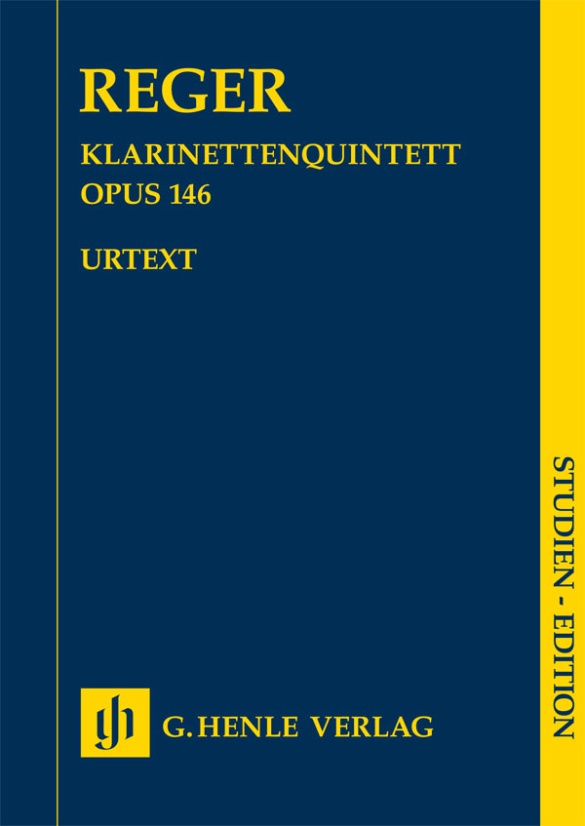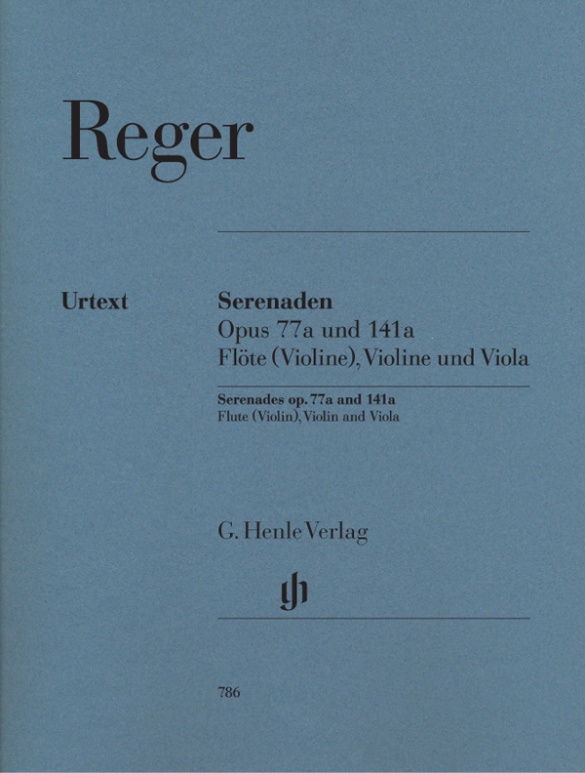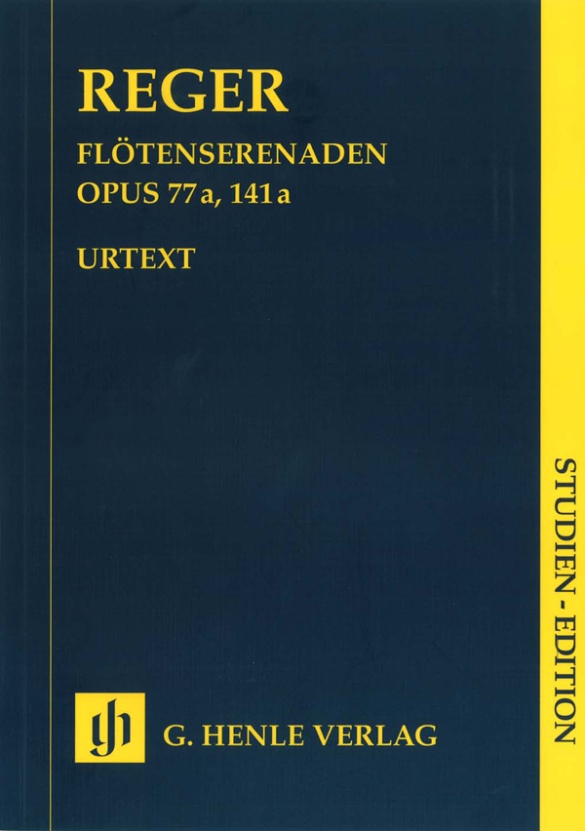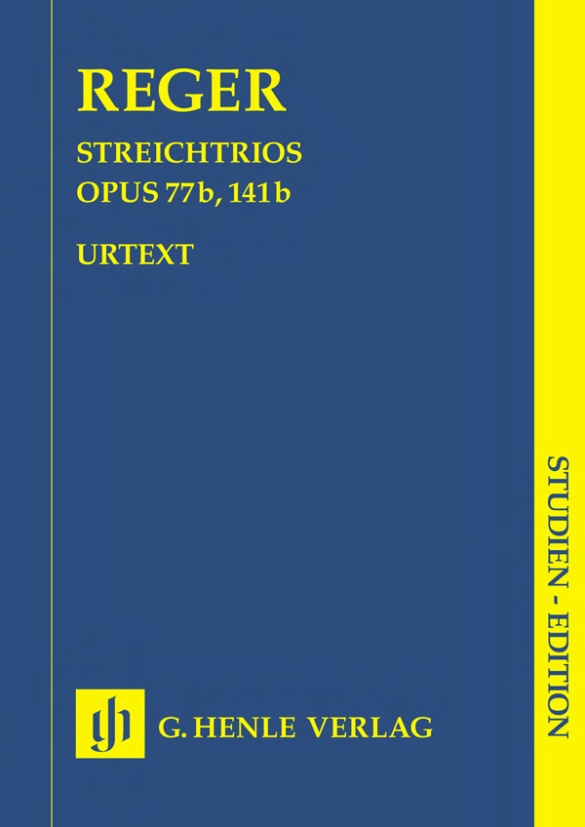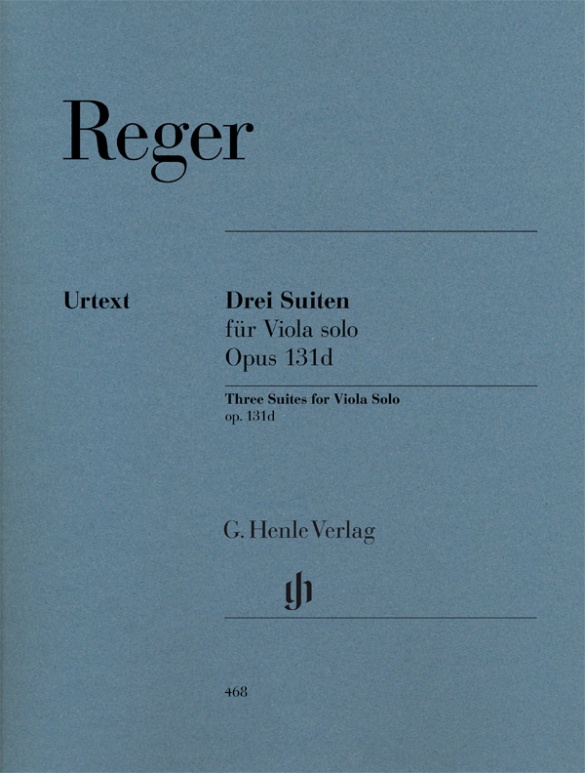

Max Reger
Three Suites op. 131d for Viola solo
Max Reger’s reception of Bach was not limited to the organ and orchestra. Like Bach, Reger wanted to compose sonatas and suites for a solo string instrument that were not merely études, but rather presented a compositional compendium. Among them are his three Suites for viola solo op. 131d. Reger published these in the last year of his life, 1914/15, together with Six Preludes and Fugues for violin solo, Three Duos in Ancient Style for two violins and Three Suites for violoncello solo, grouping all these works under the opus number 131. The present Urtext edition of the Suites for viola solo op. 131d is based on the first edition of 1916, which was prepared using the now lost manuscript. The editor discusses all the divergences between this edition and the first edition in his preface and Critical Report.
Content/Details
About the Composer
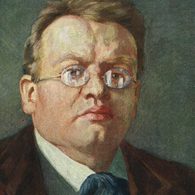
Max Reger
Late-Romantic composer who combines a chromatic tonal language with Baroque and Classical forms, thus anticipating 1920s neoclassicism.
| 1873 | Born in Brand (Upper Palatinate) on March 19, the son of a teacher. First piano lessons from his mother. |
| 1888 | After a visit to Bayreuth (for Meistersinger and Parsifal), decides on a career in music. |
| 1890–93 | Studies with Hugo Riemann at the conservatory in Wiesbaden, composes chamber works. Thereafter he endeavors to publish his own works as a freelance composer, albeit with multiple failures. |
| 1898 | Return to his parents’ home in Weiden. Composition of organ works: choral fantasies, “Fantasy and Fugue on B-A-C-H,” Op. 46 (1900); Symphonic Fantasy and Fugue (“Inferno”), Op. 57. |
| 1901–07 | Living in Munich. |
| 1903 | Publication of his “On the Theory of Modulation,” causing Riemann to feel attacked because Reger espouses a different understanding of the role of chromatics. “Variations and Fugue on an Original Theme,” Op. 73. |
| 1904 | Breakthrough with his first performance for the Allgemeine Deutsche Musikverein (General German Music Association). First volume of his “Simple Songs” for voice and piano, Op. 76; String Quartet in D minor, Op. 74, one of the most significant works in that genre at the beginning of the century. |
| From 1905 | Instructor at Munich’s Academy of Music. “Sinfonietta” in A major, Op. 90. |
| 1907–11 | Music director and professor of composition at the University of Leipzig. Orchestral work “Variations and Fugue on a Theme by Hiller,” Op. 100. |
| 1909 | “The 100th Psalm,” Op. 106, his most popular choral work. |
| 1911–14 | Director of the royal court orchestra of Saxe-Meiningen. |
| 1912 | “Concerto in the Old Style,” Op. 123. Orchestral song “An die Hoffnung” (“To Hope”), Op. 124. |
| 1913 | “Four Tone Poems after A. Böcklin” for large orchestra, Op. 128; “A Ballet Suite,” Op. 130. |
| 1914 | “Variations and Fugue on a Theme by Mozart,” Op. 132 |
| 1915 | He resides in Jena. Late compositions. |
| 1916 | Death in Leipzig on May 11. |
Product Safety Informations (GPSR)

G. Henle Verlag
Here you can find the information about the manufacturer of the product.G. Henle Verlag e.K.
Forstenrieder Allee 122
81476 München
Germany
info@henle.de
www.henle.com
The three "Viola Suites" immediately follow on from his "Six Preludes and Fugues for Solo Violin", three "Violin Duos" and "Three Suites for Solo Cello", and the intention was presumably to complete this cycle with a few works for the viola. ... However given Reger’s propensity and understanding for the instrument, this is by any yardstick, a stalwart work in the viola repertoire and eminently playable and listenable. This Urtext edition is based on the first Simrock edition of 1916. A preface details any small deviations from the Original text that were made in the interests of clarity. Henle here adopts its usual fastidious attention to veracity and critical scholarship.
Stringendo, 2003推荐
autogenerated_cross_selling
本书目其他版本


